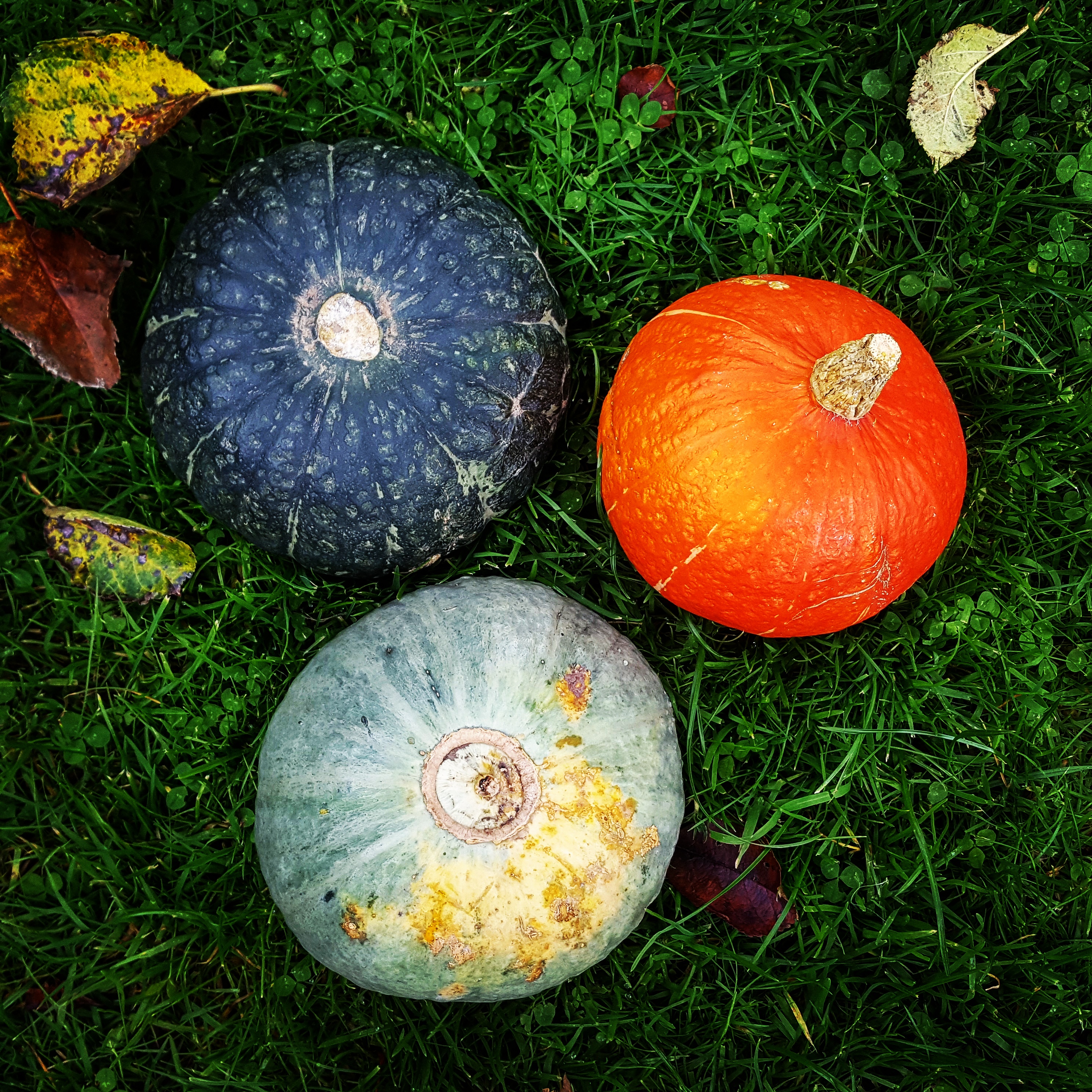How to prepare seasonal squash

Have you ever walked past those boxes in the supermarket brimming full of the most beautiful, colourful, seasonal squash, yet been put off buying one because you haven’t a clue what to do with it? And before you get to even thinking about what meal you’re going to put it in, there is the horror of how you’ll ever get past that crazy, colourful skin and incredibly awkward shape. And just what, exactly, is inside it? This quick photo tutorial will hopefully help you set your worries aside and take the giant leap of buying and preparing one yourself.
Seasonal squash come in all shapes and sizes. Even the very common and available-all-year-round (in the supermarket) butternut squash has a far from regular size and shape compared with more generic vegetables. What you need to know first about all types of squash is that they are full of large seeds. The centre contains a large stringy core in which the seeds are nestled in neat rows. The trick of peeling all types of squash is dealing with the skin and the core, but these issues can be easily overcome, as long as you have a good quality chef’s knife and a y-shaped peeler. I’ve used two types of squash in this tutorial so you can see how the method can be applied to both ridged and smooth-surfaced squash. This ridged squash is called a Carnival Squash and the larger, grey non-ridged is a Crown Prince. These two types have very different densities, the Crown Prince being very dense and thick, and also quite dry. Once roasted it needs to be eaten immediately. The Carnival is gentler and of a less dense texture, much more like the familiar butternut squash. There are so many other types which fall somewhere in between, or even pull out of their skin like spaghetti. That variety is called, appropriately, the Spaghetti Squash! For an excellent article on squash varieties, click here.
Here, the method for a ridged squash is shown first, followed by smooth, although both are principally the same. You can use this method to prepare the squash from the recipe I posted last week for Warming, Sweet and Caramelised Red Cabbage and Seasonal Squash Soup.
Method
Take your squash and if it has a pointed end, slice this off to give a 1” diameter flat base on which you can stand the squash.
Using a very sharp, good quality chef’s knife, slice the squash in half from top to bottom whilst holding it upright on the base you’ve just created. The stem will sit on one half and you’ll cut it out as you go along.
Cut the squash down the valleys between each ridge to separate it into a lot of curved lengths. You will have to cut around the stem a you go, but do it one segment at a time.
Using a dessert spoon, scrape the seeds and stringy bits out as cleanly as you can.
Using a y-shaped peeler or speed peeler, peel each segment.
You are now ready to use your squash in whatever recipe you intend to make. You may need to chop it into smaller pieces, or perhaps you are baking it in the segments you have created.
This tutorial is taken from my recipe Cinnamon Spice Crown Prince Squash with Rocket, which is, incidentally, a fantastic recipe for your first use of this variety of squash as it really showcases the flavour perfectly.This type of squash is very difficult to get into in the first instance, and the first cut can be really difficult. It is important that the squash is resting on a stable surface and that you use a robust chef’s knife. This is certainly one type of vegetable preparation where you won’t get very far if you have poor quality tools. It follows the same basic pattern as the Carnival squash, except the skin is much tougher and it is generally more difficult and long-winded from start to finish. It’s worth it though!
It‘s easier with the Crown Prince to remove the seeds as soon as you’ve halved it, as they do scoop nicely out of the cavity. You can then proceed to quarter, eighth and further divide until it is easier to handle and peel.
Both of these types of squash are fabulous to use in soups as they are very good thickeners, but they are absolutely incredible when roasted. There are a multitude of textures and tastes amongst squash and it can be very exciting to just pick up a squash at the supermarket, prepare and cook it and see how it turns out. I highly recommend roasting new types of squash in the first instance, so you get the opportunity to experience the pure taste of it. This doesn’t mean that you can’t have anything else with it! Bake it with a load of other lovely root vegetables, or shake some cinnamon and cumin over, with salt and pepper and olive oil.
As mentioned above, it really does help if you have good kitchen tools when preparing squash of all varieties. I found a really good article on the types of vegetable peeler available which you might find helpful, so have a look here. I must say, I didn’t realise there were quite so many!
I do hope this article has been helpful, and once I’m better set up, I hope to produce a video tutorial of the process.
Thank you for reading.
xxx Sam


No Comments